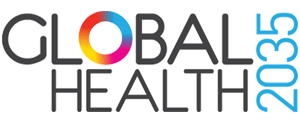In September 2015, world leaders from 193 countries came together at the United Nations to adopt a new 2030 Agenda for Sustainable Development. This ambitious agenda outlines 17 Sustainable Development Goals (SDGs) to end poverty, promote well-being, and protect the planet, including SDG 3 focused on health: "Ensure healthy lives and promote well-being for all at all ages." SDG 3 calls for dramatic and inspiring achievements, including ending the epidemics of AIDS, tuberculosis, and malaria and achieving universal health coverage, all of which will require significantly greater investments in global health.
The SDGs have the potential to catalyze further transformations in global health, helping to achieve the vision of Global Health 2035. The Commission on Investing in Health's (CIH) framework identifies priority investments to help achieve SDG 3, including greater investments in "convergence" interventions and key global functions, such as research and development. The CIH also contributes to UN policy dialogues and research to identify methods to quantify and monitor the health targets.
Economists' Declaration on Universal Health Coverage
Ahead of the September 2015 UN General Assembly, economists from 44 countries issued a joint declaration calling on world leaders to prioritize investments in health. Led by Lawrence Summers, this Economists' Declaration on Universal Health Coverage was published in The Lancet, with 267 signatories, including five Nobel Laureates and a diverse group of renowned economic thinkers.
For more information, see our News & Views article: 267 Economists Worldwide Agree: Universal Health Coverage Makes Economic Sense
Quantifying SDG3
Quantifying mortality reductions that countries could reasonably be expected to achieve by 2030 is important in setting ambitious yet realistic expectations for all countries and for developing robust indicators of progress. Evidence from the Commission's report, Global Health 2035, as well as new analyses by Commissioners and fellow researchers, suggests mortality reduction targets that are measurable and feasible by 2030.
The CIH's scale-up modeling provides quantitative estimates for levels of maternal and child health conditions and infectious diseases that could be achieved in low- and lower-middle-income countries by the year 2035. A PLOS ONE paper published in October 2015, Achieving a "Grand Convergence" in Global Health: Modeling the Technical Inputs, Costs, and Impacts from 2016 to 2030, led by Colin Boyle at UCSF Global Health Sciences, applies the CIH’s methodology to estimate convergence targets for the year 2030, aligning with the SDG timeframe. A policy brief, Quantifying SDG3, summarizes targets that the CIH evidence suggests is feasible by 2030, if aggressive investments are made to scale-up existing health interventions, delivery systems, and new technologies.
In September 2014, CIH Commissioners Dean Jamison and Gavin Yamey co-authored a Lancet paper with Richard Peto, Ole Norheim, and colleagues, Avoiding 40% of premature deaths in each country 2010-30: review of national mortality trends to help quantify the UN Sustainable Development Goal for health. This paper found that with increased international efforts, one-half of premature deaths before the age of 50, and one-third of premature deaths (death under the age of 70) could be prevented by the year 2030. This would involve a two-thirds reduction in maternal, child, and infectious disease deaths and a one-third reduction in non-communicable diseases and injuries. These findings are summarized in our 2-page policy brief, Premature deaths could be reduced by 40% over next 20 years.
These methods of quantifying SDG3 were presented at an October 2014 UN briefing, Discussion on the Health Goal in the SDGs, hosted by the Permanent Mission of Norway to the United Nations. Commissioner Gavin Yamey, Sir Richard Peto, and Dr. Ole Norheim shared evidence in a roundtable discussion with UN member states and agencies. Slides are available from the Norway Mission briefing.
Global Health 2035 at the United Nations
CIH Commissioners have presented the findings of the Global Health 2035 report in various forums at the United Nations. In Jan 2014, a full panel of Commissioners participated in a high-level briefing at UN Headquarters titled, Towards a Grand Convergence in Global Health: What Convergence Means for Health after 2015 . Video of the speakers' remarks is available on UN Web TV .
In September 2014, Kenyan President Uhuru Kenyatta hosted the "Domestic Financing for Health: Invest to Save" event at the United Nations General Assembly in New York. Commissioners Lawrence Summers and Agnes Binagwaho presented evidence from Global Health 2035 and made the case that increased domestic financing of health will not only lead to better health outcomes, but also economic gains.
In February 2015, Commissioner Gavin Yamey presented at UN World Women's Health and Development Forum on Global Health 2035 and global policy-making for women's health.
For questions on the CIH Secretariat's work on the Sustainable Development Goal for health, please contact: Sara Fewer, Policy Program Manager.
Sources:
- Institute for Health Metrics and Evaluation. Financing global health 2011: continued growth as MDG deadline approaches. IHME, 2011.
- Murray CJ, Ortblad KF, Guinovart C, Lim SS, Wolock TM, Roberts DA, et al. Global, regional, and national incidence and mortality for HIV, tuberculosis, and malaria during 1990-2013: a systematic analysis for the Global Burden of Disease Study 2013. Lancet 2014 Jul 21
